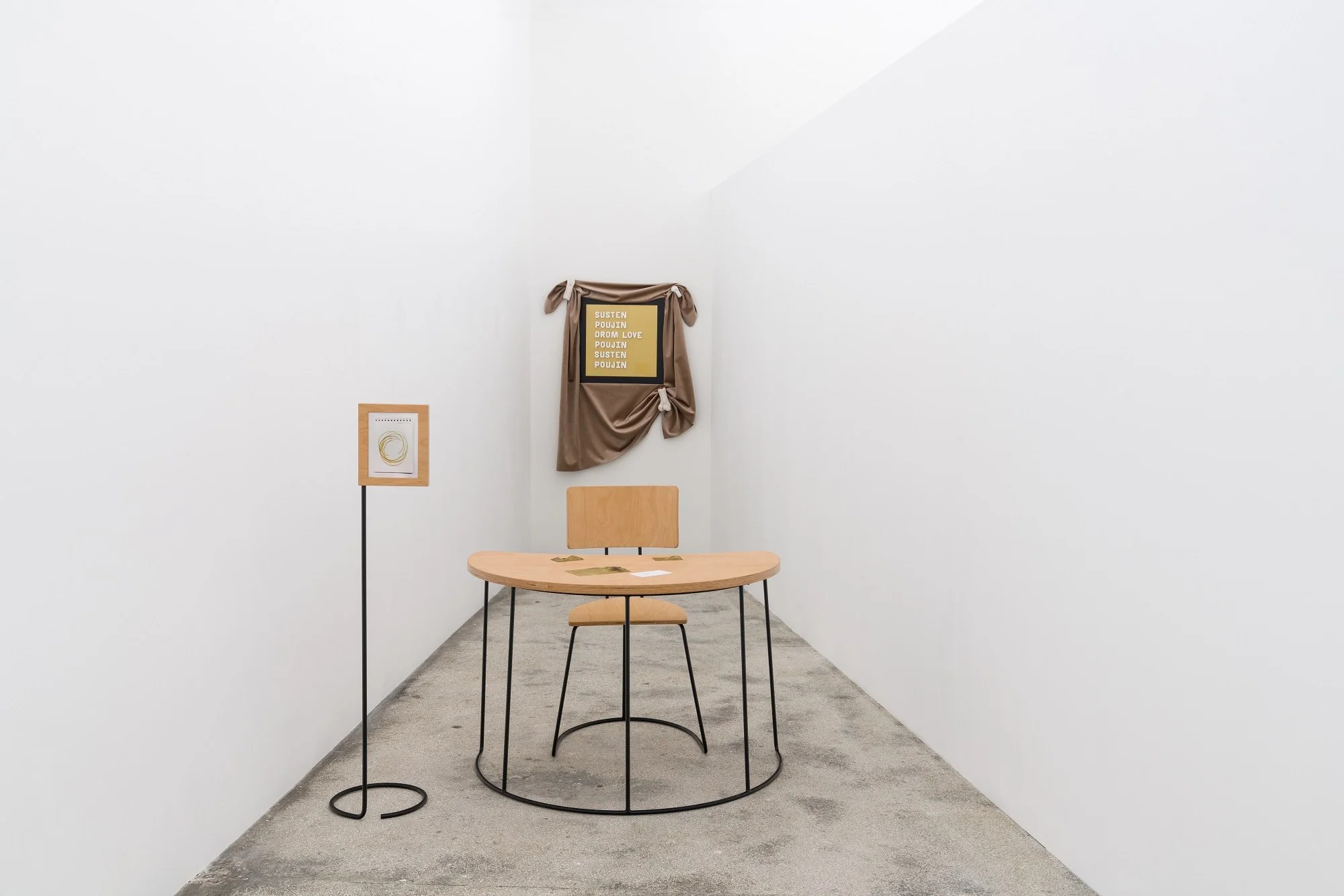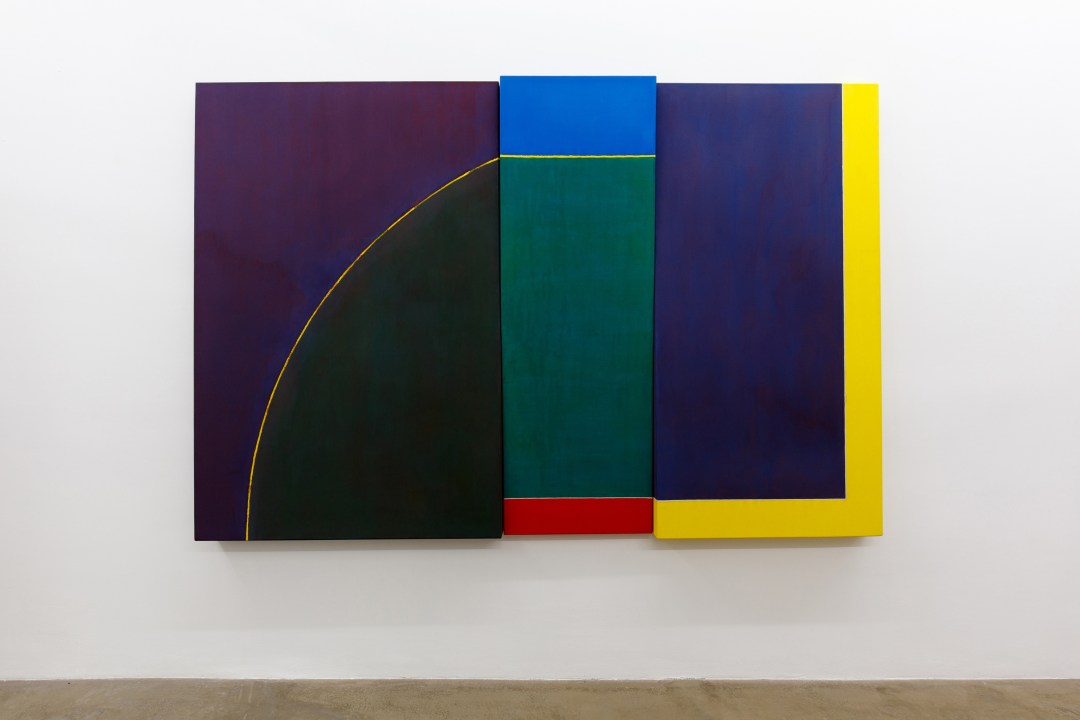The Center for Contemporary Art (CCA) presents “Gaining in a State of Debt”, the first solo exhibition by Romanian artist Alex Mirutziu (1981, Sibiu, Romania. Lives and works in Cluj-Napoca, Romania).
Mirutziu’s practice extends over a wide range of media and activities, including sculpture, drawing, poetry, and performance, as well as critical and curatorial projects. In his work, which is both highly intellectual and deeply physical, he expands the notions of approximation and proximity in connection to time, presenting “dislocated modes of arrival at meaning.” In his modus operandi, he seeks to facilitate the understanding of the body as a “turbulent performative occasion” – drawing on the poetics of homelessness and invisibility. Through his artworks, he looks at ways of suspending the set-ups of doing and un-doing, thinking and un-thinking. Alongside TAH29 (The Artist Himself at 29), he acts within a collective body whose modus operandi is “retroactive irony.”
His exhibition at CCA Tel Aviv features a new performative work, entitled Bottoms Know It, and a compilation of videos that contextualize the new work and at the same time open up new avenues of understanding. Conceived for CCA Tel Aviv and featuring three performers and three props, Bottoms Know It exposes what may come across as being implicit but unnoticed, which is not necessarily a feature of truth-making.
Through the combination of different streams of thoughts and informed by philosophical concepts that are always personalized and freely interpreted, the artist is capable of creating time-based and durational experiences between himself and the viewer, using the artwork – whether in the form of an object or a body (his own or somebody else’s) – as a channel, a catalyst, a sort of remote controller that is linking two individuals, himself and the viewer, possibly located in two different geographical and time zones. However, all the aforementioned notions never come as we usually expect them: “time-based” should be considered according to an unusual notion of time; “durational” should be perceived according to a larger scope of perception. The work of Alex Mirutziu not only makes us think, it also makes us think about the conditions allowing us to think, and un-think, to do, and un-do.
Video program (not on view during the performances):
Doing Sub Thinking, 2018. HD video, video documentation of performance, 10:51 min. Performers: Ekin Bernay, Rowdy_SS, and Jenn Vogtle. Commissioned by Block Universe Festival in collaboration with Delfina Foundation and European Art East Foundation, London. Courtesy of the artist, Galeria Sabot, Cluj-Napoca, and Galerie Rüdiger Schöttle, Munich. [video]
But as a document, 2015. HD video, performance to camera, 12:01 min. Performer: Pär Andersson; director of photography: Michael Tomescu. Courtesy of the artist, Galeria Sabot, Cluj-Napoca, and Galerie Rüdiger Schöttle, Munich. [video]
Dignity to the unsaid, 2017. HD video, 17:42 min. Word workers: Alex Popa, Irina Sibef, and Cosmin Stănilă; director of photography: Alexandru Don; camera assistant: Victor Merca. Commissioned by Marie-Laure Fleisch Gallery, Brussels. Courtesy of the artist, Galeria Sabot, Cluj-Napoca, and Galerie Rüdiger Schöttle, Munich.
Stay[s] against confusion, 2016. HD video, 14:53 min. Performer: Joshua Hubbard; director of photography: Kassandra Powell, Loukas Elark. Commissioned by Delfina Foundation, London. Courtesy of the artist, Galeria Sabot, Cluj-Napoca, and Galerie Rüdiger Schöttle, Munich. [video]
The gaze is a prolapse dressed in big business, 2018. HD video, 14:37 min. Commissioned by Frac des Pays de la Loire, Carquefou (France). Courtesy of the artist, Galeria Sabot, Cluj-Napoca, and Galerie Rüdiger Schöttle, Munich. [video]
***
“Alex Mirutziu: Gaining in a State of Debt” is curated by Nicola Trezzi in close collaboration with the artist. The exhibition is supported by Invitro, the OUTSET Residency in Tel Aviv, and the Romanian Cultural Institute – Tel Aviv. Additional support provided by Galeria Sabot, Cluj-Napoca and TAROM.
















